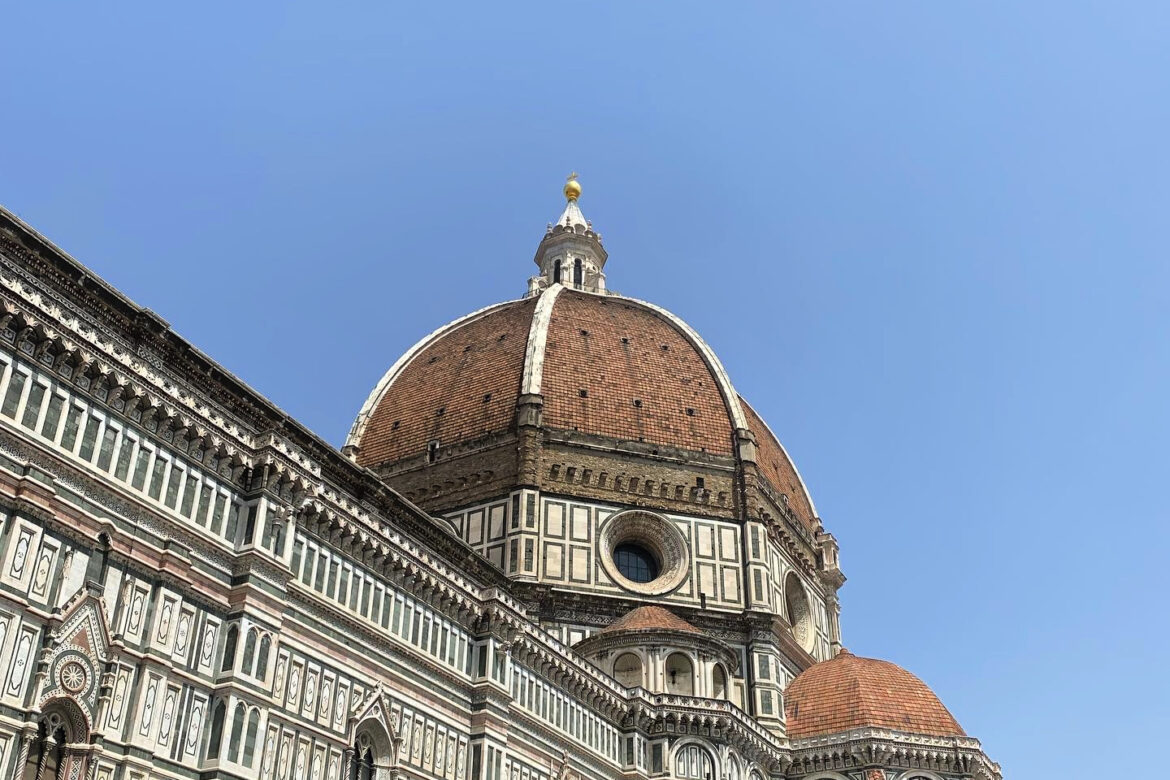
24 Hours in Florence, Italy
Wondering what to do if you only have 24 Hours in Florence, Italy? While I have spent a longer time in Florence many years ago, this summer, we only had one day. Because of the extreme summer heat, we decided to stay closer to the coast of Tuscany. From our little place near the sea, we did day trips by car. Our one day in Florence, was in my opinion, perfect.
Florence Cathedral: Cattedrale di Santa Maria del Fiore (“Il Duomo”)
The incredible Santa Maria del Fiore Cathedral is an architectural wonder. Construction began in 1296 and while the official completion was in 1496, the polychromatic façade was not completed until the 1800’s. Personally, I find it fascinating to contemplate the different styles of Cathedrals throughout Europe – the Notre Dame in Paris or the Reims Cathedral or the Duomo in Milan. Each magnificent building was completed in a unique style to the region and the Duomo in Florence is no exception with its beautiful pink, green and white exterior reflecting the sunny, Tuscan climate.
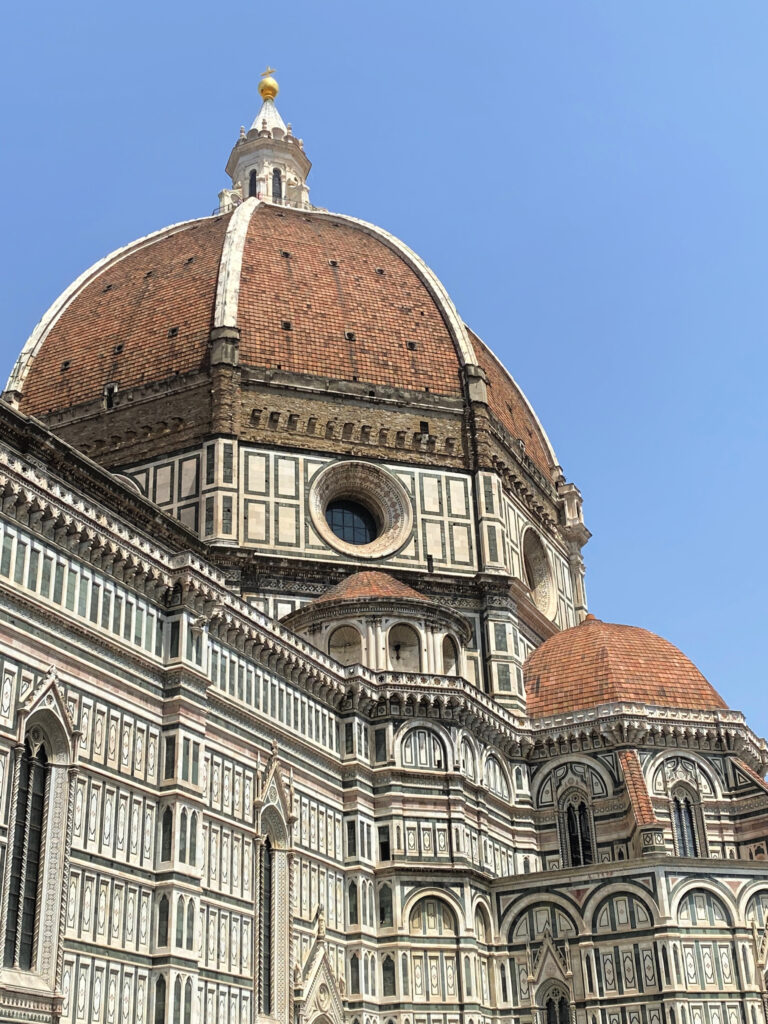
The Father of Renaissance Architecture: Filippo Brunelleschi
Of course, the main focal point of this magnificent edifice is the famous and enormous dome. The founding father of Renaissance Architecture, Filippo Brunelleschi, managed to engineer the largest masonry dome in the world at the time. The construction included more than 4 million bricks. Brunelleschi did not use the gothic buttresses that were being used in other cathedrals at the time. First, because Italian Renaissance architects felt they were ‘ugly’ and second because it was actually forbidden to use them in Florence, as they were used by their enemies to the North. (Remember, Italy did not unite into one country until the 1800’s so for much of it’s history, it was a collection of rival city-states.). Instead, Brunelleschi looked to the dome of the Pantheon in Rome for inspiration. He engineered a smaller dome inside to support the exterior dome. In true Renaissance individual style, Brunelleschi was not even formally trained as an architect or an engineer but was a goldsmith.
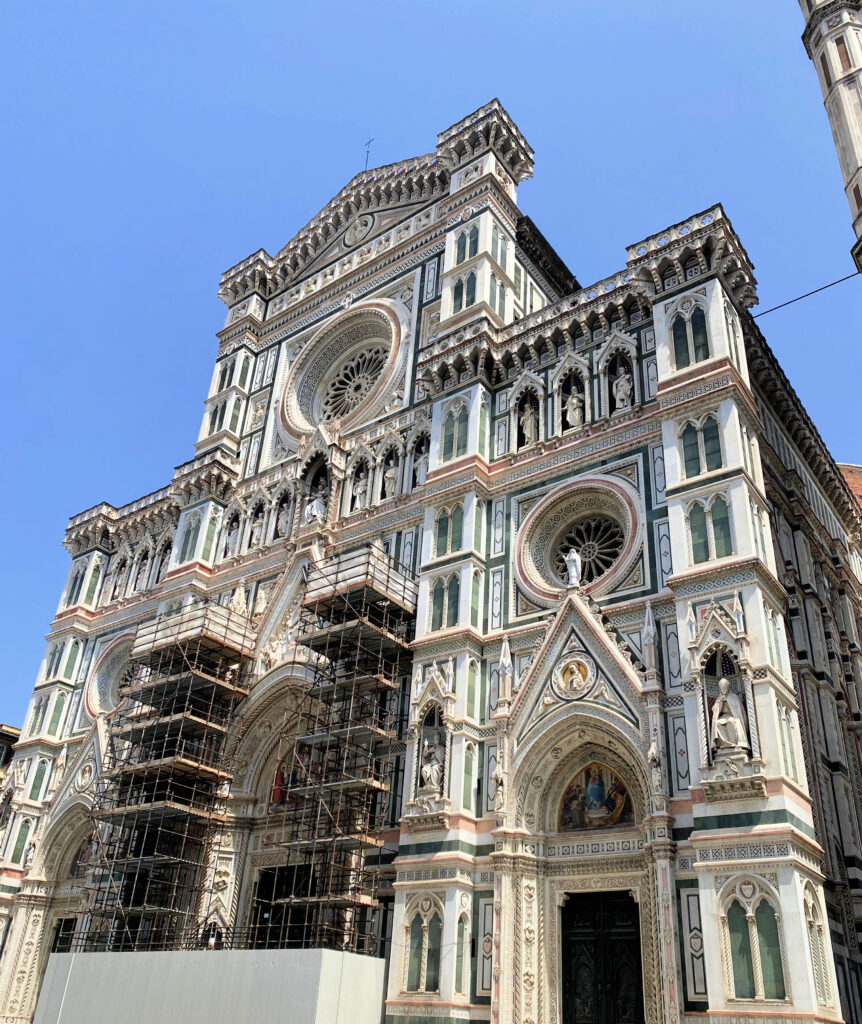
Da Vinci’s Contribution to the Cathedral
After the cathedral was formally completed in 1436, Andrea del Verrocchio, Leonardo da Vinci’s mentor, was hired to place a huge bronze ball and cross at the top of the dome. It is still unclear how, with the technology of the time, they were able to accomplish this, given the immense weight of the bronze ball and the sheer height of the cathedral. At the time, Leonardo was a young apprentice under Verrocchio, and this specific project became very inspiring to young Leonardo’s interest in engineering. Unfortunately, at one point, the ball and cross was struck by lightning and came crashing down to the floor of the cathedral.
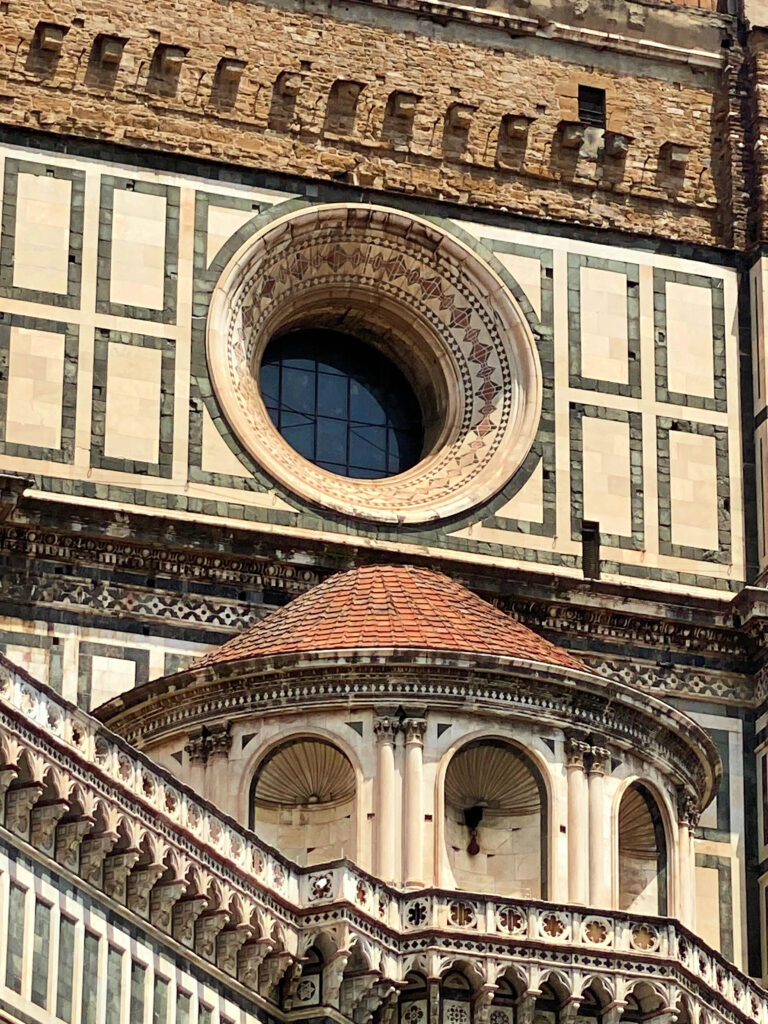
Florence Cathedral: How to Visit
There are multiple tours available depending on how much time you want to devote to this architectural wonder. Tickets of course do sell out, so make sure to book your ticket as soon as you know when you will be traveling to Florence.
Tour the Uffizi Gallery
Uffizi, which means “offices”, was originally built to consolidate the administration of the formidable Cosimo di’Medici. The art gallery today entirely occupies the first and second floors of the large building constructed between 1560 and 1580 and designed by Giorgio Vasari.
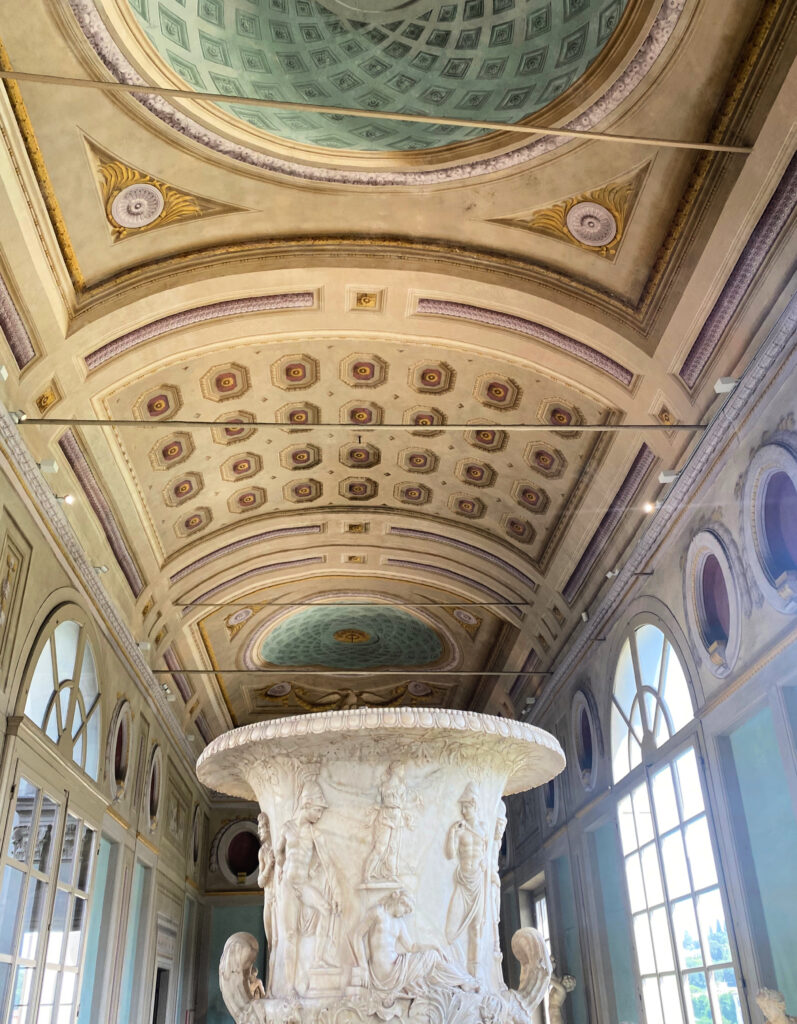
I will be writing a much more in-depth post on this incredible museum but needless to say, you must carve out just a couple hours if you can for the Uffizi. I previously taught AP European History, so walking into the Uffizi was like walking into my textbook. The amount of famous works from the Middle Ages to the Renaissance to the Modern Period is mind-boggling – Giotto, Piero della Francesca, Michelangelo, Leonardo da Vinci, Raphael, Caravaggio, Filippo Lippi, Botticelli and so many more. Plus, non-Italian art like German, Dutch and Flemish masters of the Northern Renaissance. Finally, the architecture of the space is incredible with long beautiful carved corridors, intricately painted ceilings, statues, and more.
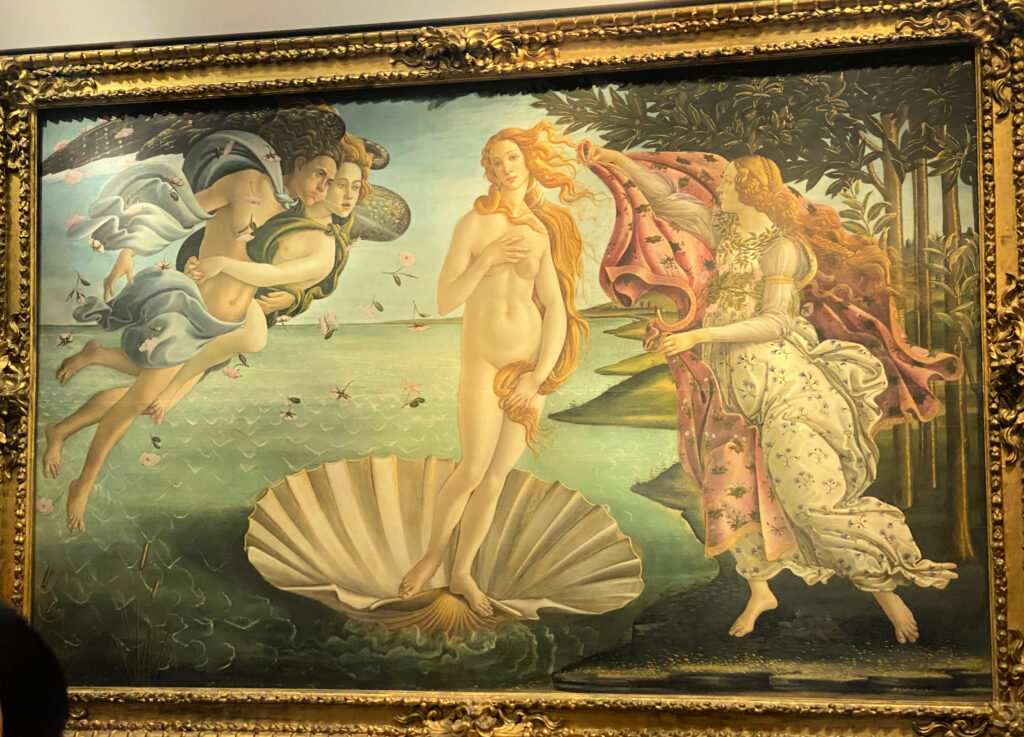
I highly recommend booking a tour guide, who can help you move through the crowded galleries efficiently plus provide knowledgeable information about the works of art. Qualified guides in Italy have years of Art History training.
Go on a Food Tour
We started our day in Florence on a delicious food tour, which I highly recommend. Our 3 hour tour with a local guide began at one of the main markets of Florence. First, we meandered through the outdoor market and since it was summer, the stands were full of delicious, fresh and vibrantly colored fruits and vegetables.
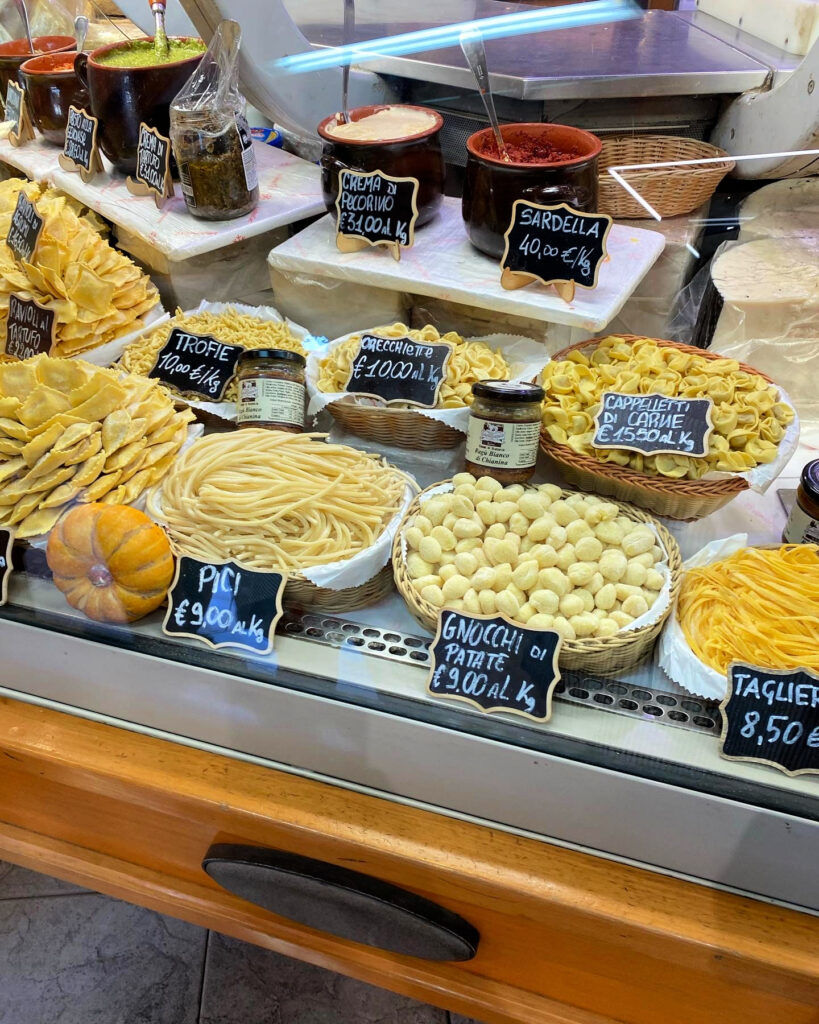
Next, we went inside to the covered market and had a chance to sample a variety of Tuscan specialties like fried bread, local cheeses, meats and olives. We left the market area into the charming streets of Florence and stopped in a typical enotecca for some local wine tasting and tasty appetizers like bruschetta. To top it off, we stopped off at the famous “Leonardo” bakery for fresh out of the oven baked goods.
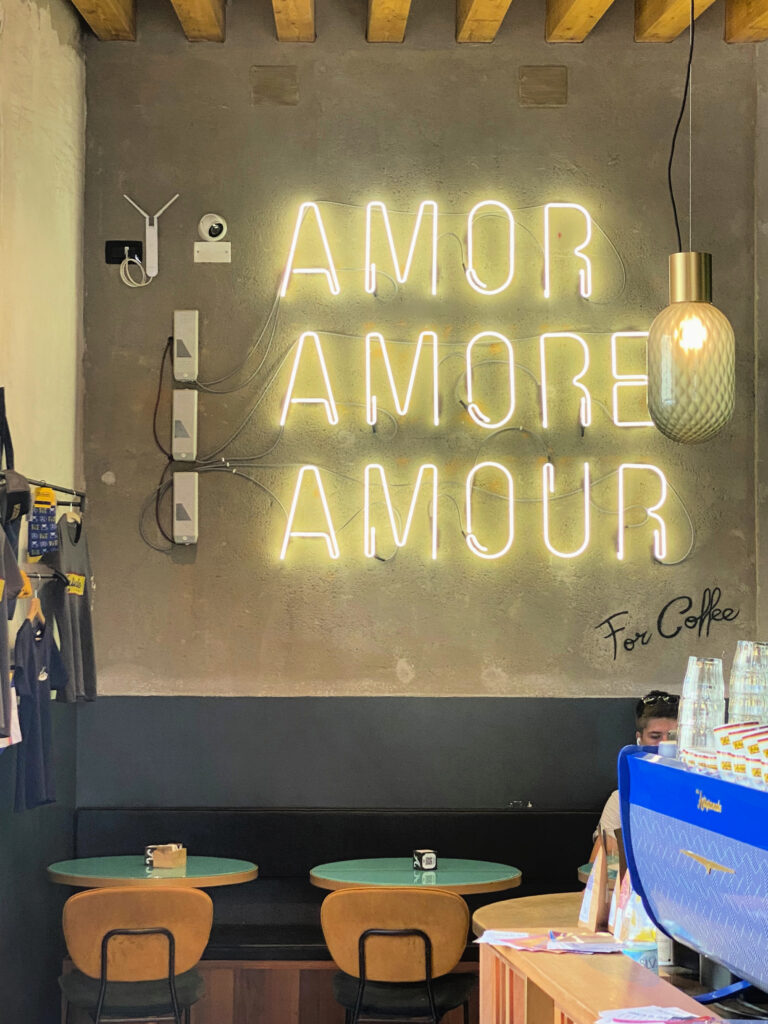
Finally, we needed to revive our energy with coffee at a very charming cafe. After all of this, we headed to the center of Florence for the art and architecture portion of our day.
Watch the tour here on my YouTube Channel:
Food Tour Recommendation: www.bonartulia.com
Tour the Medieval and Renaissance Architecture of the Center of Florence
While we made our way from the food tour over to the Uffizi, we wound through the old streets of Florence, marveling at the architecture and the history. At one point, our guide pointed out the home of Dante Alighieri, the Italian writer, poet, philosopher and author of the Divine Comedy. While most other writers were writing in Latin, he was one of the first to use the local Florentine vernacular and thus helped establish the modern day Italian language (which I am trying to learn via DuoLingo!).
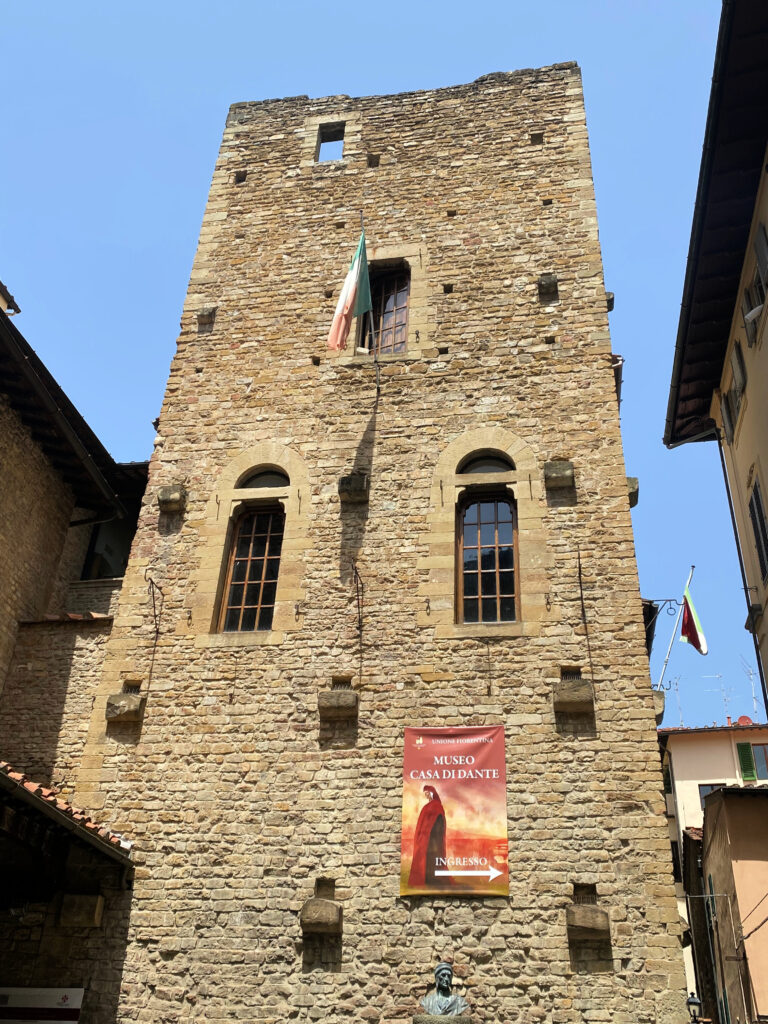
Also, you will see the medieval architecture in various buildings – for security, the “door” to buildings would be located a story or two off the ground and could only be accessed by a ladder which would be pulled up at night.
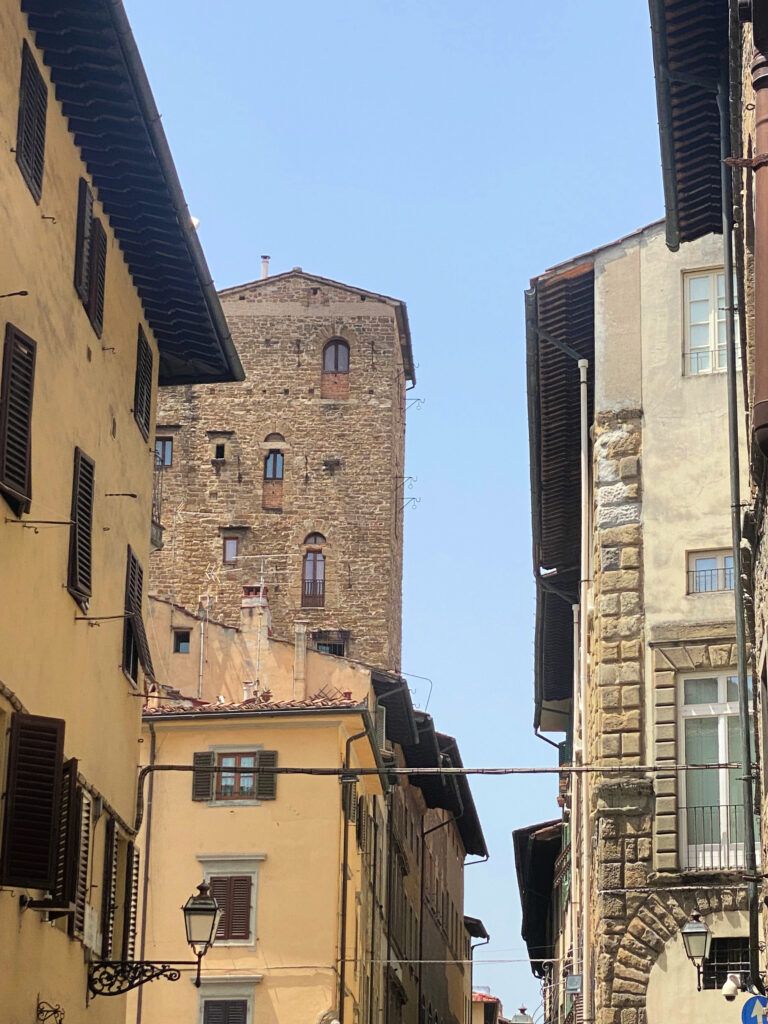
Walk Across the Ponte Vecchio
The Ponte Vecchio (the “Old Bridge”) is a medieval bridge connecting the two sides of Florence across the Arno River. The bridge dates back to Roman Times and has survived floods, wars and thousands of years of wear and tear. Shops line the bridge, as was common in medieval times. At first, the bridge was populated by fishmongers, butchers and tanners. Over time, goldsmiths and jewelers replaced them as Florence grew in wealth and prosperity and became known for its fine gold jewelry.
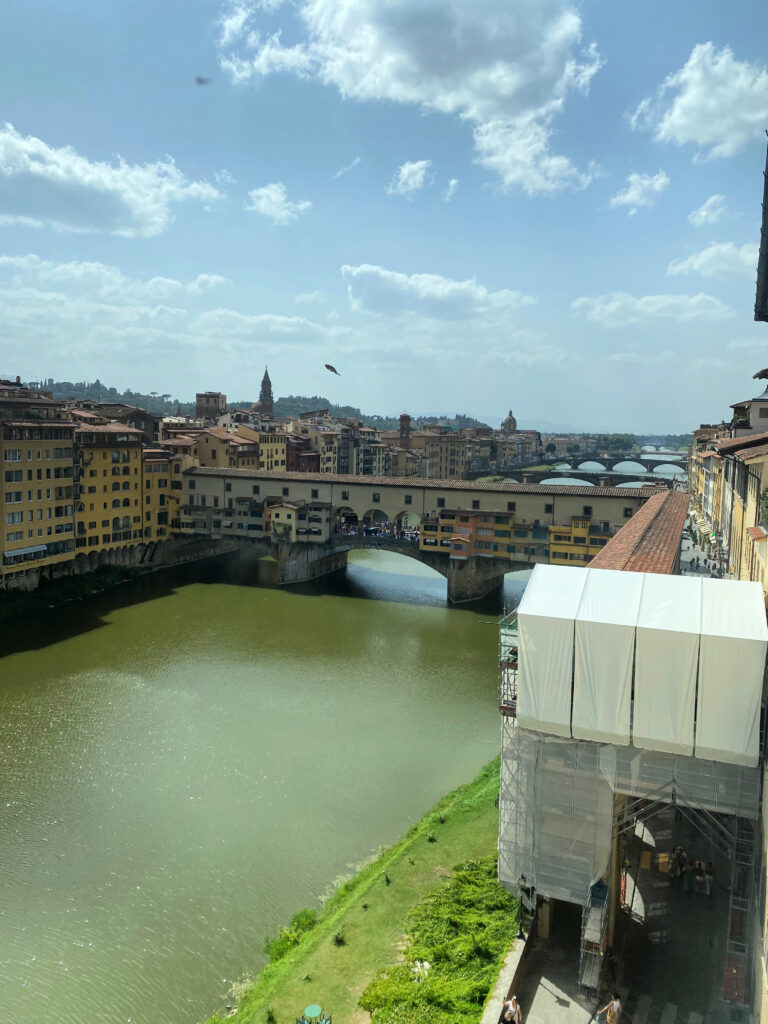
It was the only bridge in Florence to survive the bombing of World War II. While you are visiting the Uffizi, there is a lovely view of the bridge, be sure to stop and take in the view. Nowadays, there are also gelato vendors and souvenir shops and thousands of tourists. If you go early enough in the day, you might actually get to enjoy the stroll.
Visit Santa Maria Novella Church
For architect lovers, be sure to visit this famous Renaissance basilica. And if you are an architect, you no doubt spent some time studying this quintessential example of Renaissance architecture.
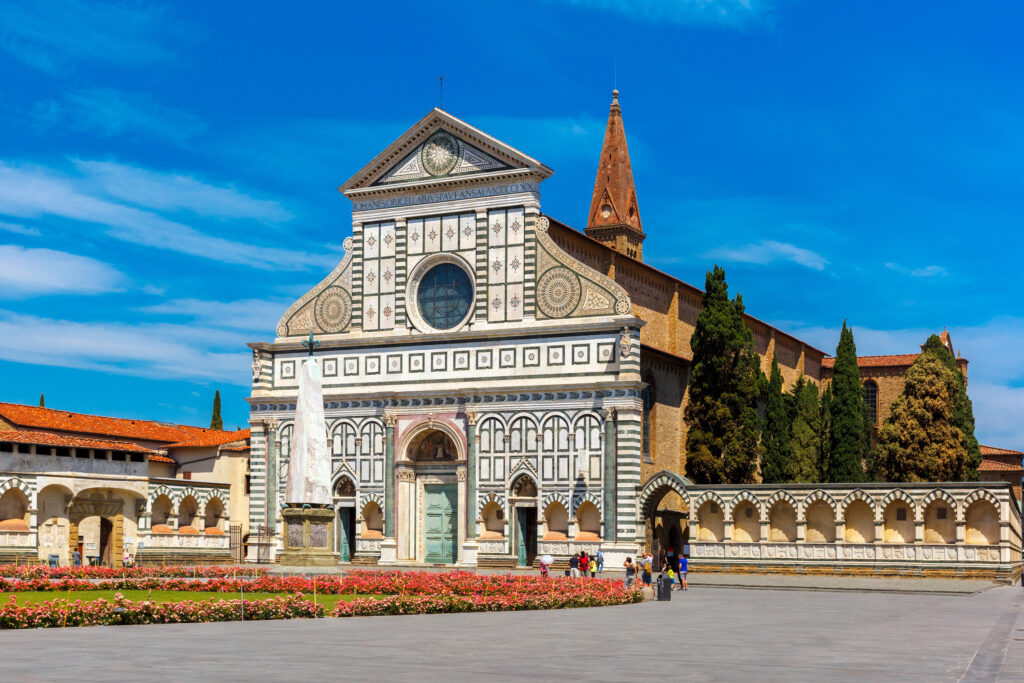
Leon Battista Alberti designed much of the church. Having authored the famous De re aedificatoria, published in 1485, and inspired by the Roman architect Vitruvius, the book became a major reference for architects (I have a copy in my library). In the church, he brought he ideals of humanist architecture, proportion and classically inspired detailing to the design. Many other artists and architects had a hand in the design, including Brunelleschi in the design of the crucifix and the famous Renaissance artist Filippino Lippi, who painted the frescoes and created some of the stained glass windows.
Address: P.za di Santa Maria Novella, 18, 50123 Firenze FI, Italy
Visitor Information: Santa Maria Novella
How Much Time Should You Spend in Florence?
For the amount of Architecture, Art, Literature, Culture and food you can absorb in Florence, I would honestly recommend 3 days. I am already plotting and scheming a more relaxed return, where I can go through the museums more slowly and walk around the city more. But, you can manage to see quite a lot in one day if you come prepared.
How to Get to Florence?
Like all the great European cities, Florence is easy to access by plane, train or car. As I mentioned, we drove as were were staying on the coast of Tuscany. It was about a 1.5 hour drive from the Forte dei Marmi area to Florence. There are tolls along the way but you can pay by credit card. We found parking on the street and there are parking garages as well. Rome is about three hours away by car and Milan is about four hours drive.
If you are flying to Florence, the airport is Aeroporto di Firenze-Peretola (FLR). The airport is only 10 minutes from the city by car/taxi/uber without traffic. There is also a tram available that takes about 22 minutes.
Finally, many people choose to travel by train for the convenience and cost. Rome to Florence by train is about a 1hour and 35 minute ride while Milan to Florence is about 2 hours. Venice to Florence is about 2 hours 15 minutes.
Many European cities, including Florence, offer self luggage storage so you can safely store your bags while you wander about for the day.
Want to Bring Italy Home?
Check out my Amazon Shop, with a collection of all things Italian that you can enjoy at home!
If You Enjoyed this Post, You Might Also Enjoy:
French Art and Culture Happenings – January 2024
24 Hours in Milan, Italy, in Nice, France, in Geneva, Switzerland
The 3 Must-See Towns along Italy’s Amalfi Coast
A Perfect Day in Saint-Émilion, France
7 Restaurants to try for your next trip to Paris
Touring France: Le Bassin d’Arcachon
Passionate about Paris’ Fondation Louis Vuitton: a ‘Magnificent Vessel’
Le Mont-Saint-Michel: Natural and Man made Wonder
5 Must Read Books for Your Trip to Paris
Notre Dame de Paris: How a Building Can Break Our Heart
The Vienna Secession Building and Gustav Klimt’s “Beethoven Frieze”
The Beautiful Architecture of Prague
Passionate about Paris’ Fondation Louis Vuitton: a ‘Magnificent Vessel’
Le Mont-Saint-Michel: Natural and Man made Wonder
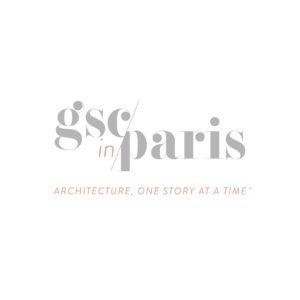
Leave a Reply